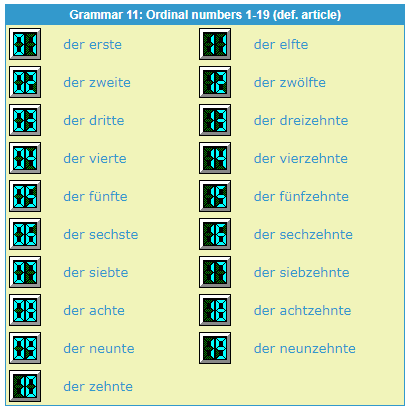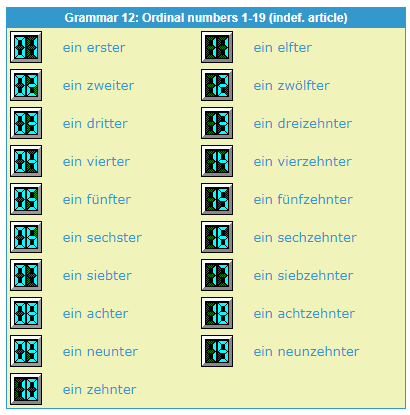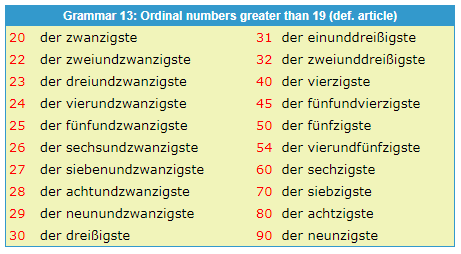Ordinal numbers from one to nineteen
We refer to the English words "first", "second", "third" etc as ordinal numbers. These are formed in German for the numbers one to nineteen by taking the number itself and adding "-t-" to the end. Four ordinals are irregular: "erst-" (= "first"), "dritt-" (= "third"), "siebt-" (= "seventh") and "acht-" (= "eighth").

When the ordinal number follows an indefinite article, the adjective endings must therefore change. For the purposes of the table below, imagine again that we are dealing with a masculine noun:

Ordinal numbers from twenty upwards
Ordinal numbers from twenty upwards are formed by adding "-st-" to the number itself. Adjective endings are then added in the usual way:

 英语
英语 日语
日语 韩语
韩语 法语
法语 西班牙语
西班牙语 意大利语
意大利语 阿拉伯语
阿拉伯语 葡萄牙语
葡萄牙语 越南语
越南语 俄语
俄语 芬兰语
芬兰语 泰语
泰语 丹麦语
丹麦语 对外汉语
对外汉语

